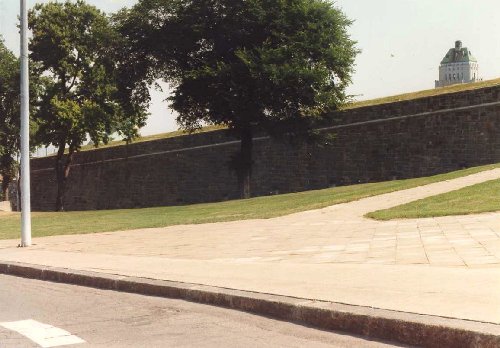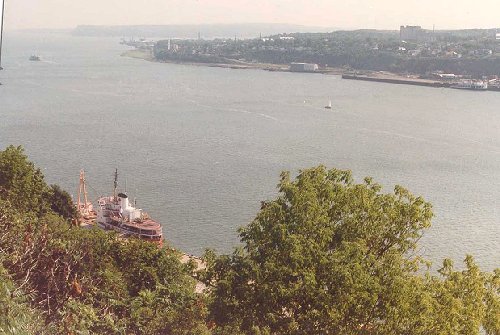
Quebec
January 1, 1776
In the summer of 1775, the Continental Congress ordered the American army at Lake Champlain to invade Canada and make it the 14th state. It took until November 13th for the 1,200 man column under Gen. Montgomery to take Montreal. Montgomery then advanced on Quebec, where he joined Benedict Arnold, who had only about 675 of the 1,100 men who started the march up the Kennebec River in September. Together they had only about 1,000 men to besiege the Quebec garrison of 1,800 under Guy Carleton. The Americans tried to bluff the British into surrendering, but were unsuccessful. The enlistments were about to expire and the army lacked artillery. Montgomery decided to assault the city rather than withdraw.

Walls of Quebec
The main defenses of the city were strong stone fortifications. It would be nearly impossible to storm these lines. Montgomery instead ordered a diversionary attack against them. Of the two groups sent against the wall, one broke and ran, and the other was unsuccessful in convincing Carleton that this was the major effort.

Montgomery's Column
Mongomery was to attack the Lower Town from the south while Arnold's column attacked from the north side. Montgomery's column descended the cliff at Wolfe's Cove and advanced two miles along the St. Lawrence River to a point about 50 yards from the British defenses. Here, Montgomery and 17 of his 300 men charged the fortifications. The British waited until the attackers closed to within a few feet and fired a withering volley of musketry and cannon. Montgomery was killed, and only about four of party fell back unwounded, among them Aaron Burr, one of the most controversial figures in American history. With the death of their bold leader, the column fell back.
This photograph also shows the Plains of Abraham battlefield. On the pre-dawn of September 13, 1759, Maj. Gen. James Wolfe led 4,500 British troops up the cliffs and deployed facing the walls of Quebec. An equal number of Frenchmen under Montcalm attacked them, determined to save the city. Superior British volley fire inflicted 200 killed and 1,200 wounded to 60 British killed and 600 wounded. Wolfe and Montcalm were both among the killed. The French were forced back into the city, which surrendered five days later. This great victory won the French and Indian War, and so helped make the Revolution possible.

St. Lawrence River
Although Montgomery's column was repulsed, Arnold had no way of knowing and continued his attack. His column of 600 men managed to break into the Lower Town. Arnold was wounded, but Cpt. Daniel Morgan assumed command and led the men over several street barriers, taking a number of prisoners. Morgan's subordinates convinced him to halt before storming the next barrier to wait for his men to come up and to wait for Montgomery's force to arrive from the other side of town. By the time Morgan continued the assault, the British had brought in more men, and the attack failed. About 200 British moved from the Upper Town and cut off the American line of retreat. Some of the Americans fled across two miles of the ice covered St. Lawrence, but 426 men were captured, including Morgan. After being exchanged, Morgan made enormous contributions to the cause at Saratoga and Cowpens.